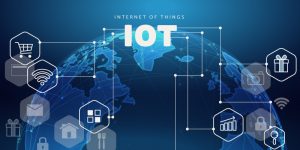 The Internet of Things Technology consists of electronic devices, machines, and other objects (laden with sensors) that are connected as a part of the IoT network. The internet-connected devices can transfer data amongst each other without human interference.
The Internet of Things Technology consists of electronic devices, machines, and other objects (laden with sensors) that are connected as a part of the IoT network. The internet-connected devices can transfer data amongst each other without human interference.
Several sectors have adopted IoT. Now, the same technology is also helping the utility sector in managing the vital demand, improving efficiency, and resolving inaccuracy in data collection.
IoT Solutions Are Helping Utility Firms In An Unpredictable Environment
The sector is witnessing intense competition in almost all the countries due to deregulation and privatization. Consumers have many options to fulfill their energy needs. Plus, firms are facing scrutiny from consumers, regulators, as well as investors when it comes to environmental matters and sustainability. Thus, companies are striving hard to reduce carbon emissions, conserve valuable finite natural resources, and improve reliability as well as transparency along with lowering distribution costs.
The supply and demand situation is unpredictable and volatile as companies are facing pressure for removing bottlenecks in power generation and transmission. Replacing and renewing power plants as well as aging networks have become crucial.
On the positive side, the energy and utility application market are set to grow with a compound annual growth rate of 22.50 percent by 2026 as per a study conducted by Inkwood Research. By 2050, the energy demand from around the world is set to double. But squeezed margins and shortage of labor along with consumer’s desire for better customer service are factors that highlight the uncertain future for firms.
IoT applications in the energy sector are helping companies in improving the efficiency of supply, reducing waste, exploring new business opportunities, and engaging consumers in a new way.
Smart Meters
Not in developing nations, but even in the UK, and the US, several companies have installed analog meters at the customer’s premises. Firms send employees on the field to count the energy consumption readings on these meters. The process is time and resource consuming. The task becomes even more difficult during rough weather conditions.
Thankfully, smart meters have simplified the meter reading procedure. Smart meters can be monitored remotely. Power companies, as well as consumers, can get power consumption details on a real-time basis. Besides consumption readings, intelligent meters also send alerts to gas/power/water suppliers in case of an outage. Most importantly, AI, IoT powered meters offer critical power consumption related insights to electricity companies.
Smart meters offer error-free reading and help utility companies in ensuring regulatory compliance. Firms can provide error-free bills as per actual consumption rather than estimation during rough climatic conditions.
The improvement in the billing procedures results in lesser billing queries and disputes. The company’s cash flow remains better, and debt gets serviced on time. The technology also enables energy companies to offer prepaid services to the consumer without any need for high pre-payments or up-front deposit.
Demand-based Power Generation And Distribution
Traditional power grids have no solution when it comes to monitoring energy consumption. Now, smart power grids offer real-time power consumption data, and this helps utility companies in carrying out on-demand power generation and distribution.
Power companies can adjust the supply between low consumption residential areas and power-hungry industrial zones as per the consumption data. IoT in utilities has empowered firms to develop such customized distribution strategies within minutes.
IoT Sensors Help In Carrying Out Predictive Maintenance
Gas, electricity, and water supply companies rely on equipment that’s prone to failure in spite of conducting frequent inspections. Equipment failure results in business downtime, angry customers, and ultimately, loss of business.
IoT technology has proved to be a game-changer during recent years. IoT solutions help in preventing leaks and contamination in oil and gas pipelines by monitoring valves, pressure gauges. The sensors in these tools can highlight abnormal behavior, including vibration, and the temperature change on a real-time basis.
Wildfires, electrocution, and other incidents can be easily avoided by turning off supply in areas where sensors state damaged power lines. Administrators can check these stats and conduct predictive maintenance for preventing downtime. Put, thanks to the IoT, companies get the opportunity to repair equipment before they fail.
Managing Small Power Generation Resources
As per analysis presented by Credit Suisse, by 2025, the solar power generated by residential units is expected to touch 41 gigawatts. A higher number of businesses and homeowners around the world are opting for rooftop solar panels, and contributing excess power to the grid. Thus, the power systems operated by energy companies need to be equipped for managing many small generation resources. Internet of Things technology-powered smart grids help power companies in detecting changes, enabling them to manage demands.
Making decisions about network configuration, load switching, and voltage control has also become easy.
Energy Conservation Using IoT
In hundreds of houses, thermostats keep on maintaining temperature and lights remain on even when there’s no one home. Smart IoT Development Services have sensors that turn down HVAC units and turn off lights when there’s no activity sensed at the property. Residential and commercial property owners can control these smart systems, and get real-time data on utility consumption using their mobile phones even while away from the property.
If you are searching for a software vendor with experience in developing solutions with IoT in the energy and utility application market, you should discuss your project with Smart Sight Innovation’s engineers.













